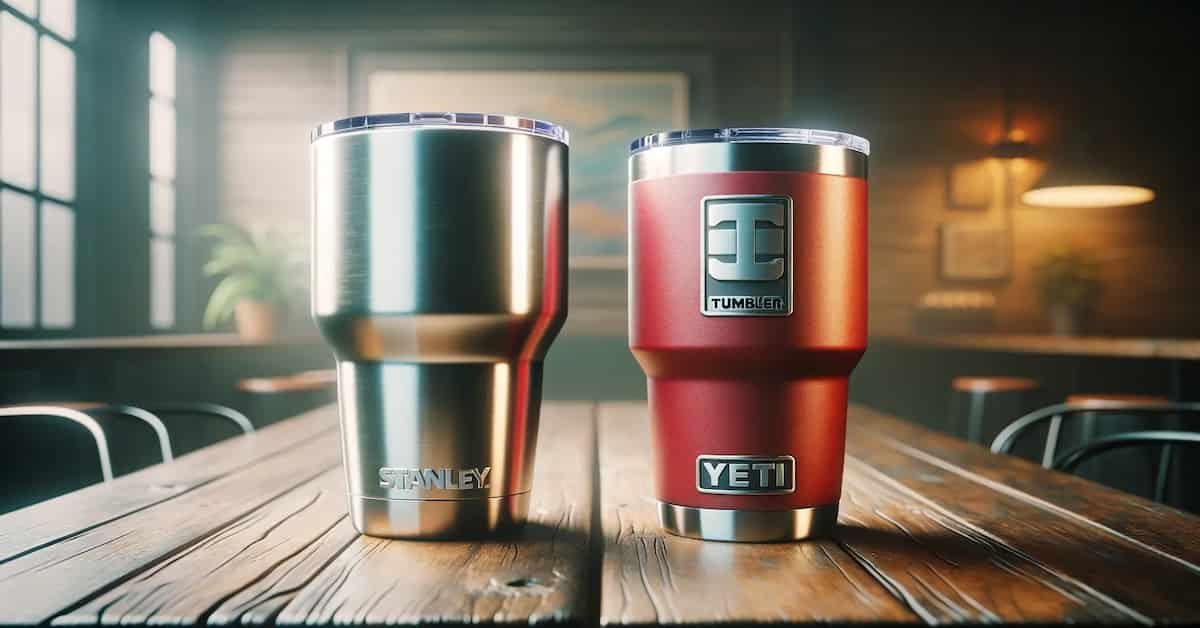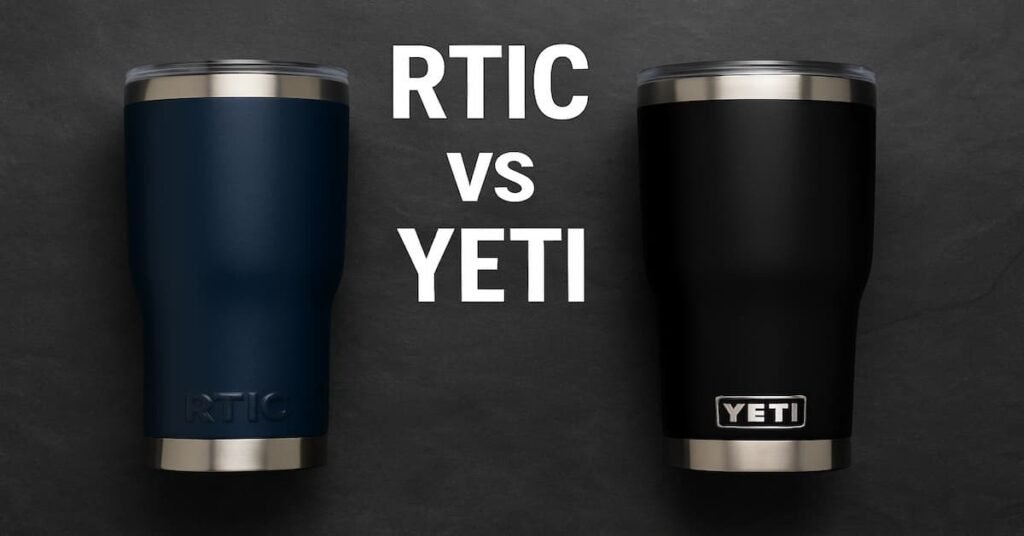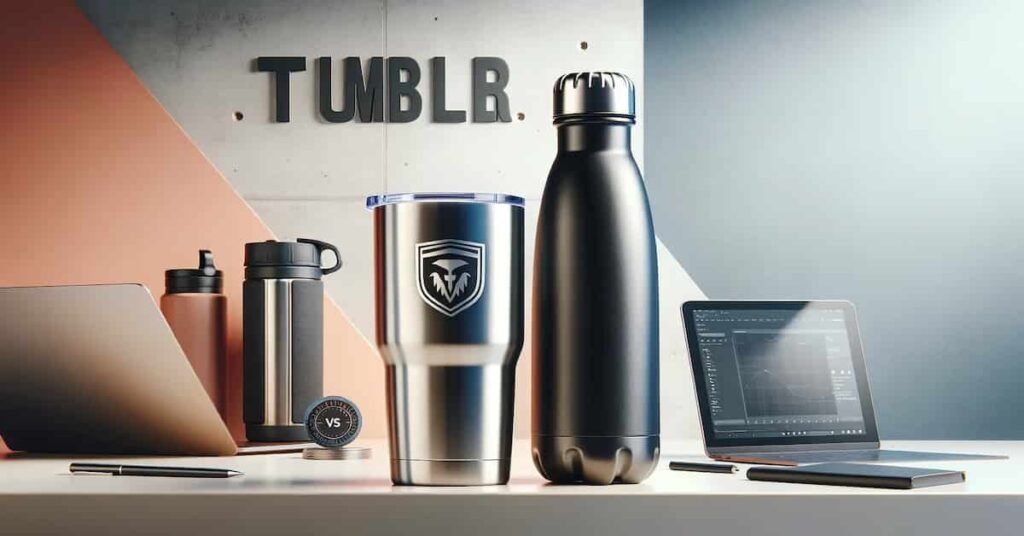
🥤 Introduction: The Great Tumbler Debate
If you’ve been hunting for the perfect tumbler in 2025, two names keep bubbling up: Stanley and YETI. Whether you’re sipping iced lattes, hitting the hiking trails, or staying hydrated at your desk, these two brands are go-to choices. But which one truly stands out?
We’re diving into the Stanley vs YETI showdown—exploring insulation, durability, design, and overall user satisfaction—so you can confidently invest in a tumbler that fits your lifestyle. 🌟
Table of Contents
🔍 Brand Overview
🟢 Stanley
Founded in 1913, Stanley has become a heritage name in outdoor drinkware. It recently exploded in popularity thanks to its Quencher FlowState Tumblers, known for their pastel color palettes, large handles, and social media buzz.
Notable Features:
- Double-wall vacuum insulation
- Recycled stainless steel
- Iconic ergonomic handle
- FlowState lid with rotating cover + straw
👉 Internal link: Check out our full Stanley Quencher H2.0 Review
🔵 YETI
YETI was born for the wild. Since 2006, it has built a reputation for rugged, reliable, and ultra-insulated drinkware. The Rambler Series is the fan-favorite, ideal for both city life and outdoor adventures.
Notable Features:
- Kitchen-grade stainless steel
- DuraCoat color coating
- MagSlider or Chug Cap lid options
- Bear-proof toughness 🐻
👉 Internal link: Read Full YETI Review
⚖️ Head-to-Head Comparison
| Feature | Stanley Quencher | YETI Rambler |
|---|---|---|
| Insulation | 11–14 hours cold, 7 hours hot | 12–18 hours cold, 6 hours hot |
| Lid Style | FlowState Lid with straw | MagSlider or Chug Cap |
| Material | Recycled 90% stainless steel | Kitchen-grade 18/8 stainless steel |
| Capacity Options | 30 oz, 40 oz, 64 oz | 20 oz, 30 oz, 46 oz |
| Color Variety | Wide (pastels, earth tones) | Moderate (neutrals, bolds) |
| Handle | Yes, integrated | Only on select models |
| Durability | Good for daily use | Extremely rugged and durable |
| Aesthetic | Trendy and viral | Bold and minimalist |
📝 Pros and Cons Table
| Feature | Stanley Quencher ✅ | YETI Rambler ✅ |
| Pros | – Stylish & trendy- Great for daily use- Built-in handle- Excellent straw system | – Superior insulation- Rugged design- Custom lid options- Great brand legacy |
| Cons | – Bulky for small bags- Straw not always leakproof- Less rugged than YETI | – Heavier- More expensive- No handle on most models |
⭐ 5-Star Rating Comparison
| Feature | Stanley ⭐ | YETI ⭐ |
| Insulation | ⭐⭐⭐⭐ | ⭐⭐⭐⭐⭐ |
| Durability | ⭐⭐⭐⭐ | ⭐⭐⭐⭐⭐ |
| Style & Design | ⭐⭐⭐⭐⭐ | ⭐⭐⭐⭐ |
| Ease of Use | ⭐⭐⭐⭐⭐ | ⭐⭐⭐⭐ |
| Lid Functionality | ⭐⭐⭐⭐ | ⭐⭐⭐⭐⭐ |
| Value for Money | ⭐⭐⭐⭐ | ⭐⭐⭐ |
🧭 Which One Should You Choose?
If you’re all about trend-forward design, comfort, and daily usability, Stanley’s Quencher is your perfect pick—especially if you love a cute tumbler that turns heads (and matches your outfit). 💁♀️
On the flip side, if you prioritize function over fashion, crave maximum insulation, and need something that can survive a 10-day hike, YETI takes the crown.
🏕️ For Outdoor Adventurers: Go YETI. 🏡 For Stylish Everyday Sippers: Go Stanley.
👉 Internal link: Explore Top Hydration Tumblers for Travel
❓ FAQs: Stanley vs YETI Tumblers
1. What makes a good insulated tumbler?
- Double-wall vacuum insulation
- Leakproof lid
- Easy-to-clean materials
- Comfortable grip or handle
2. How do I clean my Stanley or YETI tumbler?
- Hand wash lid and straw
- Stainless steel body is usually dishwasher-safe
- Use a bottle brush and baking soda for deep cleans
3. Is the Stanley Quencher dishwasher-safe?
- Yes, both the tumbler and lid are top-rack dishwasher safe.
4. Why is YETI more expensive?
- YETI products are built for extreme durability and often use premium-grade materials, designed to withstand the toughest environments.
5. Can I use these tumblers for hot and cold drinks?
- Absolutely! Both Stanley and YETI are versatile and maintain temperature for hours.
🚀 Final Thoughts
Whether you’re on Team Stanley or Team YETI, the key is choosing a tumbler that aligns with your lifestyle, habits, and hydration needs. Both brands offer exceptional quality in 2025—it’s simply a matter of vibe vs. performance. 💧
Still unsure?
- Best Insulated Tumblers with Straw Lids – Top Picks for 2025
- Check out our HydraPeak Water Bottle Lids Guide for versatile accessories
👉 Tell us in the comments: Are you Team Stanley or Team YETI?


